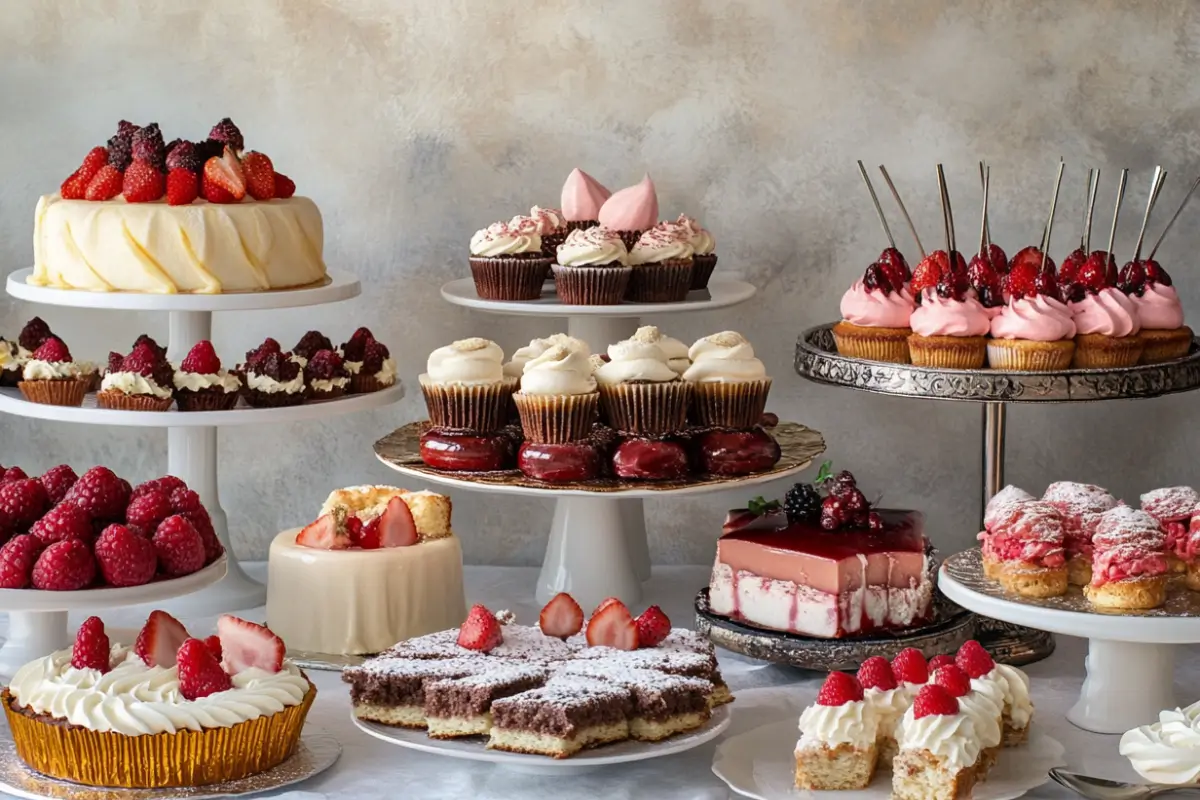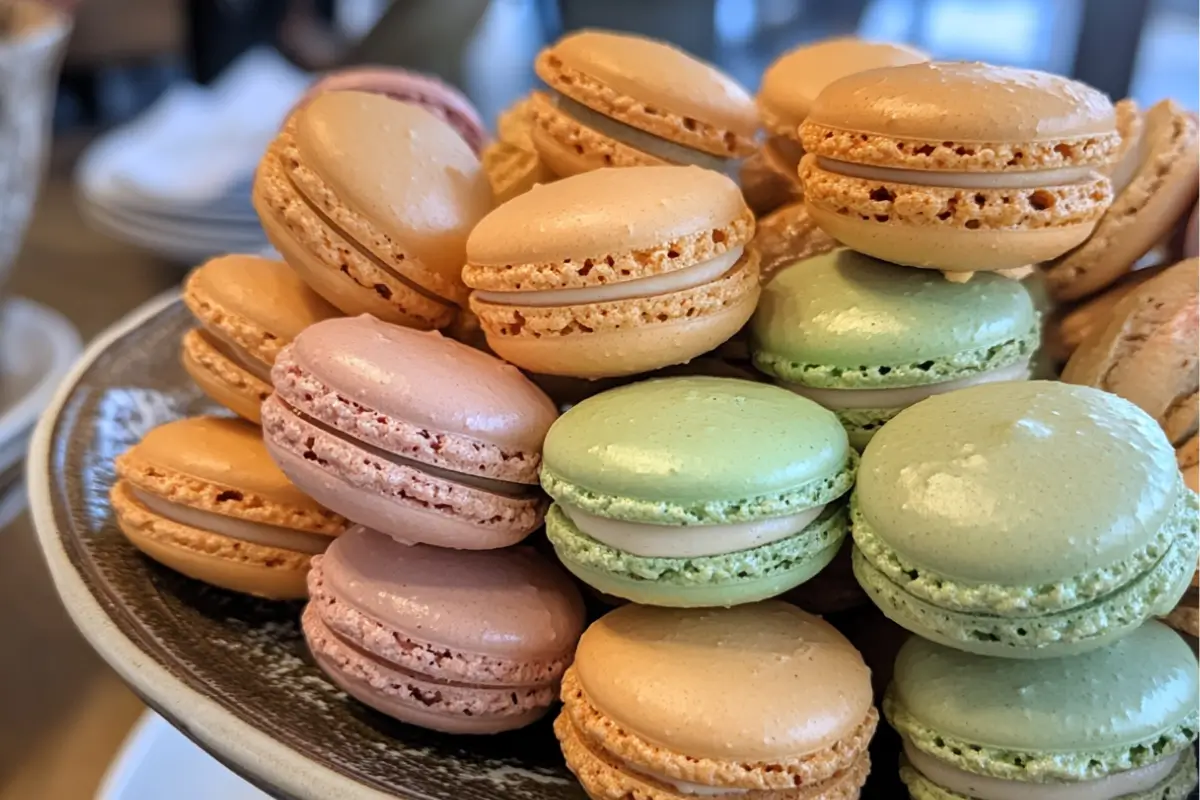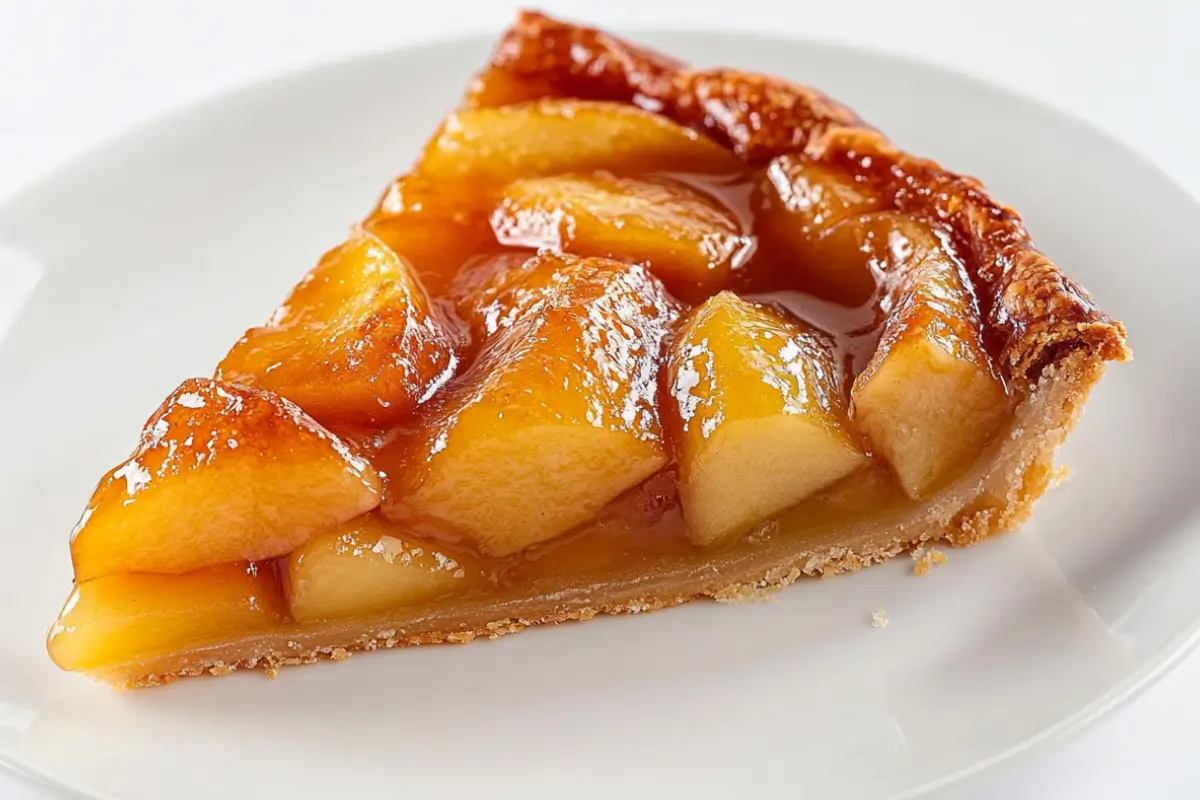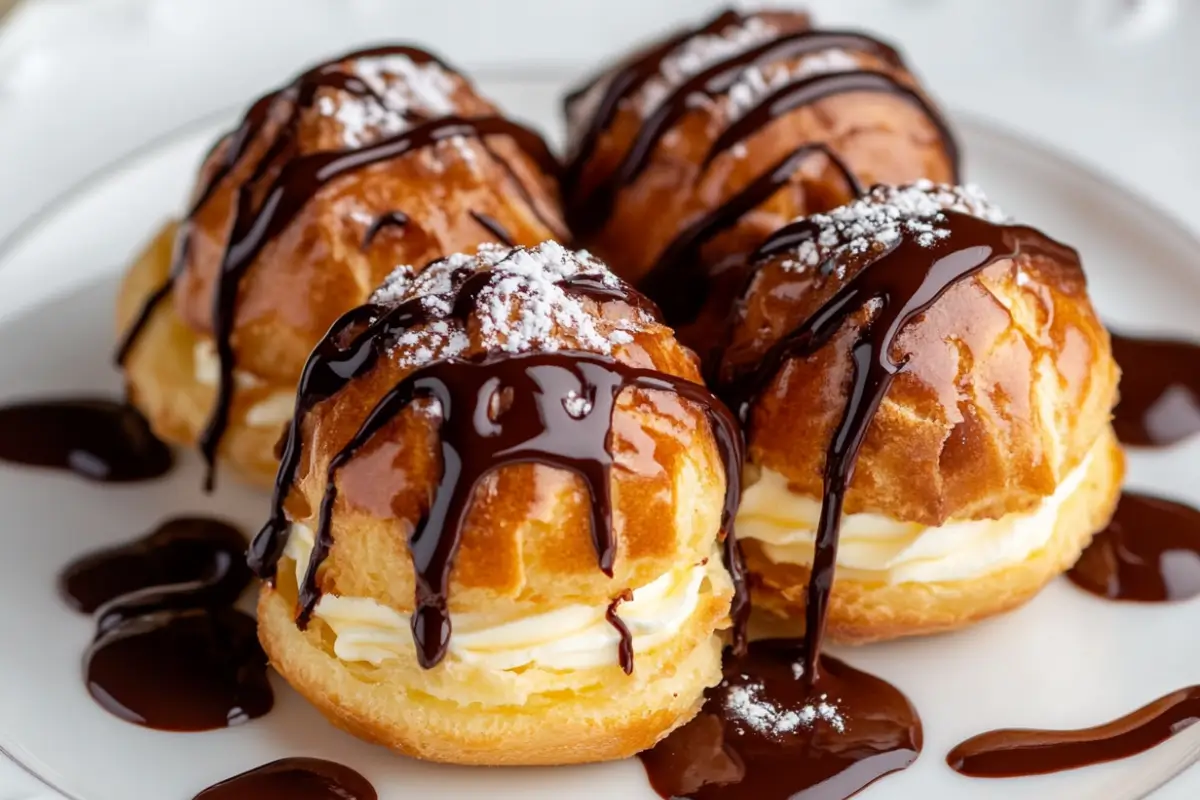French desserts. Just the words conjure images of elegant pastries, delicate flavors, and a rich culinary heritage. From the simple elegance of a crème brûlée to the intricate artistry of a mille-feuille, French desserts are renowned for their sophistication and irresistible appeal. More than just sweets, they’re a reflection of French culture, where food is celebrated and savored. Whether you’re an experienced baker or a novice in the kitchen, there’s a French dessert out there for you. This guide will take you on a delectable journey through the world of “Irresistible French Desserts,” offering classic recipes, insightful tips, and a glimpse into the history and traditions behind these iconic treats. Prepare to be transported to a Parisian pâtisserie!
A Parisian Sweet Escape: Unveiling Classic French Desserts

Crème Brûlée: The Torched Custard Classic
As discussed earlier, crème brûlée is a quintessential French dessert consisting of a rich custard base topped with a brittle caramel crust. For a fun twist on classic desserts, you might even consider black and white sliced desserts to introduce a different visual appeal.
Macarons: The Colorful Confections

Macarons are delicate meringue-based cookies filled with ganache, buttercream, or jam. They are known for their smooth, colorful shells and their chewy texture. While challenging to master, the effort is well worth it for the exquisite taste and visual appeal. Macarons come in a rainbow of flavors, from classic vanilla and chocolate to more exotic options like pistachio, raspberry, and salted caramel. They are a true testament to the artistry of French pastry.
Croissants: The Buttery Breakfast Staple
While technically a viennoiserie (a type of pastry made from yeast-leavened dough), croissants are a staple of the French breakfast and deserve a place on this list. For another cool delight that is not French but still loved, you might try snow ice cream recipe flavors and safety!
Chocolate Mousse: The Decadent Delight
Chocolate mousse is a classic French dessert made with chocolate, eggs, and cream. It’s known for its light and airy texture and its rich, chocolatey flavor. This dessert can be served in individual cups or as part of a larger cake or pastry. There are many variations of chocolate mousse, from dark chocolate to milk chocolate to white chocolate.
Tarte Tatin: The Upside-Down Apple Tart

Tarte Tatin is an upside-down apple tart made with caramelized apples and a buttery pastry crust. The apples are cooked in butter and sugar until they are soft and caramelized, then topped with pastry and baked. When the tart is cooled, it is inverted, revealing the beautiful caramelized apples. This dessert is both rustic and elegant, and it’s perfect for showcasing seasonal apples.
Crêpes: The Versatile Pancake Alternative
Crêpes are thin pancakes that can be served sweet or savory. Sweet crêpes are often filled with Nutella, fruit, jam, or whipped cream, while savory crêpes can be filled with cheese, ham, vegetables, or eggs. Crêpes are a versatile and customizable dessert that can be enjoyed any time of day. They are often made on a special crêpe maker, but they can also be made in a regular frying pan.
Profiteroles: Cream Puffs with Chocolate Sauce

Profiteroles are small cream puffs made from pâte à choux, a light and airy dough. They are typically filled with whipped cream, pastry cream, or ice cream, and drizzled with chocolate sauce. Profiteroles can be served individually or stacked into a croquembouche, a towering dessert often served at weddings and other special occasions.
Mille-Feuille: The Thousand-Layer Pastry
Mille-feuille, meaning “thousand leaves” in French, is a classic pastry made with layers of puff pastry and pastry cream. The pastry is baked until golden brown and crispy, then filled with pastry cream and topped with a glaze or powdered sugar. Mille-feuille is known for its delicate layers and its rich, creamy filling. It requires skill to create the perfect flaky layers.
Eclairs: The Oblong Cream Puffs
Eclairs are oblong cream puffs made from pâte à choux and filled with pastry cream. If you’re seeking a taste of Italian sunshine with a lemony twist, consider exploring Amalfi lemon cake.
FAQs
What is the most famous dessert in France?
While there are many contenders, Crème Brûlée is often considered the most famous dessert in France. Its simple elegance and satisfying caramel crack make it a favorite worldwide, transcending cultural boundaries. Other strong contenders include macarons, chocolate mousse, and Tarte Tatin.
What is Gordon Ramsay’s favorite dessert?
As previously noted, Gordon Ramsay doesn’t have one definitively stated favorite dessert, but he favors well-executed classics like sticky toffee pudding and apple crumble, and appreciates creative twists on tradition.
What is the easiest French dessert to make?
Crêpes are generally considered one of the easiest French desserts to make. The batter requires minimal ingredients and the cooking process is straightforward. Simple chocolate mousse recipes are also relatively easy.
What do the French usually eat for dessert?
The French enjoy a wide variety of desserts, ranging from simple to elaborate. Common choices include fruit tarts, chocolate desserts, crème brûlée, macarons, and pastries like croissants and pain au chocolat. They often accompany their dessert with coffee or tea.
Mastering French Dessert Techniques: A Baker’s Toolkit
Creating authentic French desserts requires mastering a few key techniques:
-
Pâte à Choux: This is the dough used to make profiteroles and eclairs. It’s made with water, butter, flour, and eggs, and it requires careful attention to detail to achieve the perfect texture.
-
Puff Pastry: This is the dough used to make croissants and mille-feuille. It’s made with layers of butter and dough, and it requires patience and precision to create the perfect flaky layers.
-
Pastry Cream: This is a rich and creamy filling used in many French desserts. It’s made with milk, sugar, eggs, and cornstarch, and it requires constant stirring to prevent lumps from forming.
-
Meringue: This is a light and airy mixture of egg whites and sugar. It’s used to make macarons and other desserts.
-
Caramelizing Sugar: This technique is used to make crème brûlée and Tarte Tatin. It requires careful attention to prevent the sugar from burning.
Tips for Baking French Desserts at Home:
-
Use Quality Ingredients: The quality of your ingredients will greatly affect the taste of your desserts.
-
Follow the Recipe Carefully: French dessert recipes often require precise measurements and techniques.
-
Be Patient: Many French desserts require patience and attention to detail.
-
Don’t Be Afraid to Experiment: Once you’ve mastered the basics, don’t be afraid to experiment with different flavors and variations.
Serving Suggestions for a Parisian Touch:
-
Serve with Coffee or Tea: French desserts are often enjoyed with a cup of coffee or tea.
-
Arrange Artfully: Present your desserts in an attractive way.
-
Use Elegant Dishes: Serve your desserts on elegant dishes or platters.
Veganizing French Desserts: A Plant-Based Approach:
While traditionally many French desserts rely heavily on dairy and eggs, it’s becoming increasingly possible to create delicious vegan versions.
-
Vegan Butter Substitutes: Plant-based butter alternatives can work well in crusts and pastry doughs.
-
Aquafaba Meringue: Aquafaba (chickpea brine) can be whipped into a meringue, providing a vegan alternative to egg whites.
-
Coconut Cream: Full-fat coconut cream can be whipped and used as a dairy-free alternative to whipped cream.
French Desserts for Different Skill Levels:
-
Easy: Crêpes, Chocolate Mousse (simple version)
-
Intermediate: Tarte Tatin, Profiteroles, Eclairs
-
Advanced: Macarons, Mille-Feuille
The History and Cultural Significance of French Desserts:
French desserts have a long and rich history, dating back to the Middle Ages. Over time, French pastry chefs have developed innovative techniques and created iconic desserts that are enjoyed around the world. French desserts are not just about the food itself, but also about the experience of enjoying it. They are often served at special occasions and celebrations, and they are meant to be savored and shared with loved ones.
Where to Find Authentic French Desserts (If You Can’t Make Them!):
-
Local French Bakeries: Seek out authentic French bakeries in your area.
-
Specialty Pastry Shops: Specialty pastry shops often carry a selection of French desserts.
-
High-End Restaurants: Many high-end restaurants feature French desserts on their menu.
Conclusion
French desserts are a testament to the artistry and skill of French pastry chefs. From the simple elegance of a crème brûlée to the intricate layers of a mille-feuille, these desserts offer a delightful and unforgettable culinary experience. If you’re looking to further explore this culinary landscape, you can find a wide array of French dessert recipes. Whether you’re a seasoned baker or a novice in the kitchen, this guide has provided you with the inspiration and knowledge you need to explore the world of “Irresistible French Desserts.” So, gather your ingredients, sharpen your skills, and get ready to create your own Parisian sweet escape!
